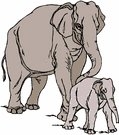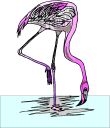
Worksheets and No Prep Teaching Resources
Reading Comprehension Worksheets
Animal Themes
Birds
Halloween

Animal Themes
 Worksheets and No Prep Teaching Resources Reading Comprehension Worksheets Animal Themes Birds Halloween |
 Animal Themes |
| edHelper's suggested reading level: | grades 4 to 7 | |
| Flesch-Kincaid grade level: | 6.6 |
| Owls |

|
 1 As night falls, this bird slowly emerges from its daytime sleep. It rests on a tree branch in the dark and uses its acute hearing to pick up sounds made by prey. It occasionally turns its head three-quarters of the way around to look for its next meal. Once a victim is located, it launches a surprise attack by approaching the prey in silence. This skillful hunter is an owl!
1 As night falls, this bird slowly emerges from its daytime sleep. It rests on a tree branch in the dark and uses its acute hearing to pick up sounds made by prey. It occasionally turns its head three-quarters of the way around to look for its next meal. Once a victim is located, it launches a surprise attack by approaching the prey in silence. This skillful hunter is an owl! |
Create Weekly Reading Books
Prepare for an entire week at once! |
| Leave your feedback on Owls (use this link if you found an error in the story) |
 |
Animal Themes
|
 |
Birds
|
 |
Halloween
|
|
|